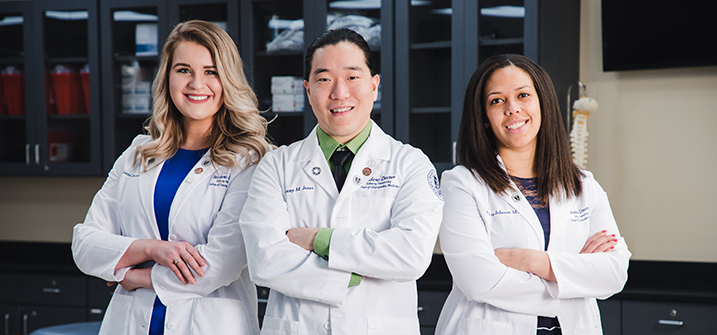Liberty osteopathic medical students should arrive at all scheduled course activities in attire appropriate and in accordance with the LUCOM Student Handbook, in a manner and with an attitude that is consistent with the professional behavior of a physician. Students must maintain a professional appearance appropriate for attending medical school.
Attire should be clean, neat, and convey a professional appearance whenever the student is on the main campus or at any off-campus educational site. Those failing to comply may be dismissed from the classroom and/or the campus resulting in him/her being reported to the LUCOM Office of Admissions and Student Services for appropriate disciplinary actions.
Aspiring physicians’ dress should reflect the professional behavior associated with serving patients and colleagues with respect and dignity.
- Anatomy Lab
- Class Lecture
- Clinical Rotations
- Osteopathic Manipulative Medicine (OMM) Lab
- Patient Centered Medicine (PCM) Lab
- Special Events
- Dress Code Violations
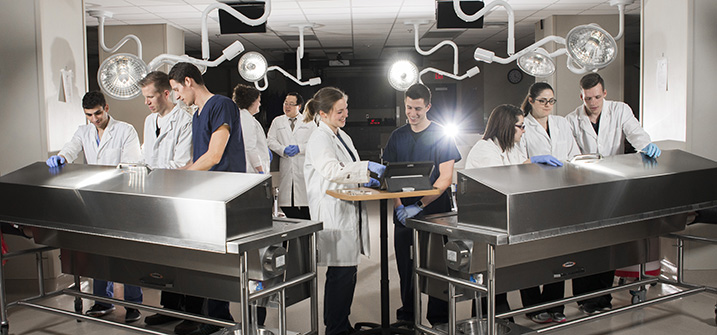
Anatomy Lab
It is important that students dress appropriately for Anatomy lab sessions. Students are expected to take part in dissection during lab sessions while also abiding by the Department of Anatomical Sciences dress code.
For safety, students are required to wear scrubs and shoes that completely cover the foot whenever they are in the laboratory. Open-toed or perforated shoes, shorts and short skirts are not to be worn in the anatomy lab. Student may not be allowed in the lab if this dress code is not followed. We recommend long hair be tied up to keep it out of the dissection area.
The gross anatomy laboratory is under negative air pressure and maintained at 64-68 degrees Fahrenheit so the entrance door should never be propped open and the thermostat should never be touched. The cool temperature is necessary to aid in the preservation of the cadaver tissue and students must not change the thermostat setting. Extra layers of clothing can be kept in student lockers for use under lab coats or on top of scrubs when in the laboratory.

Class Lecture
It is important that students dress appropriately for class lectures. For all students, the University issued identification badge must be worn at all times in addition to the acceptable professional or business casual attire noted below:
Male students:
- Slacks or pants
- Shirt with collar
- Sweater or sweat-shirts over a collared shirt
- Suit or sports coat
- Business, dress, or athletic shoes
Female students:
- Slacks, pants, dress, or skirt
- Professionally appropriate blouse/sweater
- Sweater or sweatshirt over a collared shirt
- Scarf
- Athletic, dress or business shoes
Clinical Rotations
It is important that students dress appropriately for clinical rotations. Students shall be in professional dress consistent with the standards of the preceptor and clinical site. Students are to wear their LUCOM white coat and name tag as well as any identification required by the clinical site. Students may wear scrubs if appropriate and approved by their preceptor.
At no time should a student present to a clinical site in jeans, shorts, t-shirts or other clothing that is detailed as inappropriate.
When returning to the LUCOM campus, third- and fourth-year students are expected to be compliant with the LUCOM dress code as outlined in the LUCOM Student Handbook.
Scrubs may not be worn on clinical rotations except on Surgery, OB, or ER unless directed by faculty or DSME.
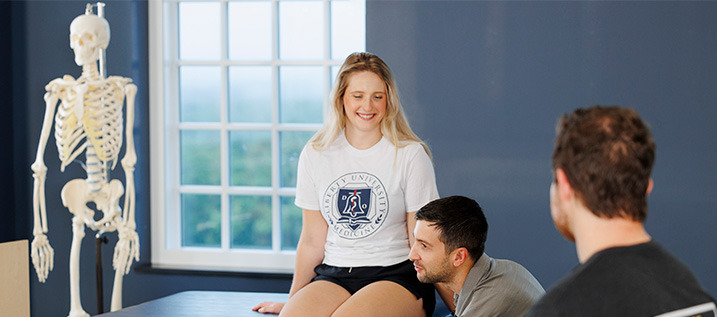
Osteopathic Manipulative Medicine (OMM) Lab
It is important that students dress appropriately for OMM lab sessions. Students are expected to give and receive an osteopathic diagnosis and manipulative treatment. Full body lab dress is required for all didactic labs and practical assessment when students are required to act as “patients” for their lab partner. At all times, students should display professionalism, courtesy, and respect for others in their conduct and actions toward peers, patients, faculty and staff.
Full body lab dress requires the following:
Upper body – must allow for exposure of skin overlying the hands, elbows, shoulders, clavicles, scapula, spine and most posterior rib angles.
- Men – Modest T-shirt, scrub top, or bare skin (when requested). Closed-toe shoes must be worn.
- Women – Modest T-shirt or scrub top with a modest sports bra (no racerback) or tank top. The lower body must allow skin exposure of the neck, abdomen, spine, posterior superior iliac spine (PSIS), knees, ankles, and feet. Closed-toe shoes must be worn.
- Men & Women – Modest light-weight shorts, scrub bottoms or exercise pants. No heavy Canvas, denim, or cargo shorts. closed-toe shoes must be worn.
Garments worn for religious reasons are acceptable dress in OMM laboratory experiences; however, they should be removed if they interfere with palpatory/visual assessment or OMT. For example, headscarves should be removed when the assessment or OMT of the head is being performed.
Shoes and belts are not allowed on the OMM tables, as they may rip the vinyl.
Patient-Centered Medicine (PCM) Lab
It is important that students dress appropriately for PCM lab sessions. Students will be learning and practicing their examination skills on each other. At all times, students should display professionalism, courtesy, and respect for others in their conduct and actions toward peers, patients, faculty and staff.
During assessments and lab sessions where physical examination skills are taught, students must dress in a manner that facilitates a physical examination to be performed on them, as students are required to act as “patients” for their lab partner. In order to minimize interference in learning the physical examination techniques, students must dress in a manner such that their partner will be allowed the best possible access to the body structures.
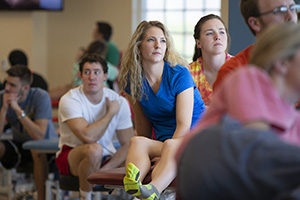 Lab dress requires the following:
Lab dress requires the following:
- Men – shorts and a t-shirt
- Women – shorts, t-shirt, and sports bra
In accordance with the Technical Standards that each student signed prior to matriculation, every student will be expected to dress appropriately for lab.
Garments worn for religious reasons are acceptable dress in PCM laboratory experiences; however, they should be removed if they interfere with palpatory or visual assessment. For example, headscarves should be removed when the assessment of the head is being performed.
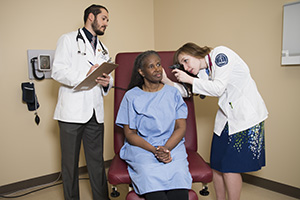 During standardized patient encounters, students must dress appropriately:
During standardized patient encounters, students must dress appropriately:
- Men – shirt and tie (neck or bow), dress slacks, dress shoes, and visible socks
- Women – dresses, skirts, or dress slacks with a blouse and/or sweater. Closed-toe dress shoes must be worn, no open-toed shoes will be allowed. No boots with leggings are allowed. Nails must be short to avoid harm to the patient.
Due to patient safety regulations, no artificial nails may be worn during Standardized Patient encounters.
All students must wear their white lab coats and have their student ID.
Lab coats must be clean and pressed.

Special Events (Jeans Days and Hawaiian Shirt Fridays)
On occasion, LUCOM will host designated Jeans Days. On designated Jeans Days all faculty, administrative staff, and student-doctors are allowed to wear jeans. Specific guidelines and advance approvals on what are allowed and not allowed will be sent via email.
On Fridays, LUCOM faculty, administrative staff, and student-doctors are allowed to wear a Hawaiian shirt (no jeans).
Dress Code Violations
Students may not wear the following unless specified in the syllabus or required for laboratory experiences:
- Shorts or cutoffs
- Miniskirts
- Jeans or denim of any type (except on designated “Jeans Day”)
- See-through clothing or halter tops
- Sandals, flip-flops, crocs, or any open-toed shoe
- T-shirts of any type may not be worn as the outer shirt
- Jogging, yoga, or other exercise clothing
- Inappropriately matched garments
- Garments with any offensive, suggestive, obscene, or unprofessional statements or gestures
- Hats, caps, or head coverings, other than the religious cover, may not be worn in the classroom, laboratories, library, or other educational settings.
